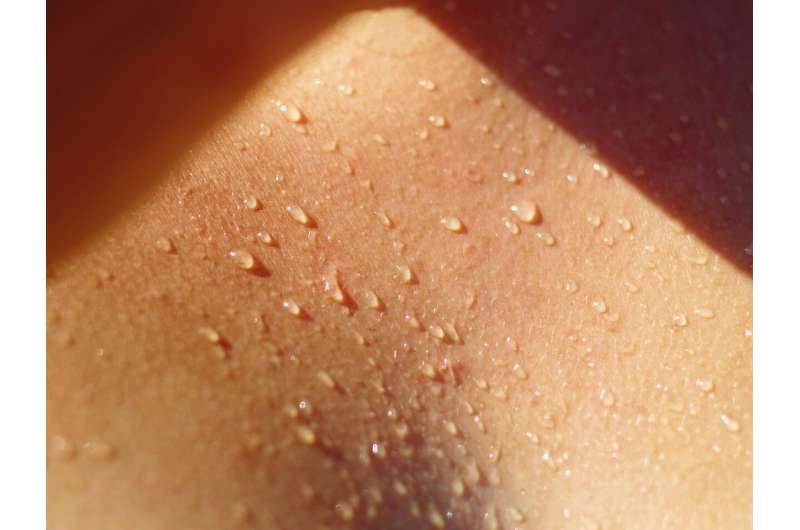A recent study published in the Journal of the Royal Society Interface has unveiled new insights into the mechanics of sweating, revealing that sweat forms in a more complex manner than previously understood. This research, led by Konrad Rykaczewski, indicates that sweat does not simply emerge as distinct droplets but rather behaves more like a tide, pooling in skin pores before spreading across the surface.
The study highlights a significant advancement in our understanding of how sweat forms, spreads, and evaporates. Traditionally, it was believed that sweat formed as individual beads on the skin. However, Rykaczewski and his team found that sweat rises through pores, accumulating into a shallow film that ultimately covers the skin. This discovery could have implications for various fields, including sports science and textile development.
Research Methodology and Findings
To investigate the dynamics of sweating, researchers recruited six healthy adult volunteers. Each participant was placed in a specialized suit designed to regulate temperature through circulating warm or cool water. During the experiment, they experienced cycles of heating and cooling while researchers monitored sweat production, particularly on their foreheads.
Sweating began within approximately 15 minutes of heating, with sweat emerging in a nearly flat form that pooled in each pore. This sweat then spilled over to connect with other droplets, forming a larger film across the skin. When the participants were cooled, the newly formed sweat film evaporated rapidly, leaving a thin layer of salt on the skin. Upon heating again, the presence of this salt facilitated quicker sweat production, allowing it to bypass the droplet stage entirely and emerge as a film.
Rykaczewski noted, “Our findings challenge the traditional conceptualization of sweat emerging from pores as hemispherical droplets, demonstrating that sweat commonly forms a shallow meniscus in the pore.”
This research bridges the gap between microscale and macroscale understanding of sweating, offering a comprehensive view of how sweat interacts with the skin’s outer layer, known as the stratum corneum.
Implications of the Findings
The implications of this research extend beyond mere academic interest. Understanding the mechanics of sweating can lead to improved products and textiles designed to manage sweat effectively, which is particularly relevant for athletes and individuals in high-temperature environments. Enhanced knowledge of sweat dynamics may also contribute to better skin health by informing the development of skincare products that work in harmony with the body’s natural processes.
As heat waves become more common due to climate change, the ability to understand and manage sweat becomes increasingly important for maintaining comfort and health. This study not only sheds light on how our bodies function but also paves the way for innovations that could enhance daily living for many.
The research, conducted by Rykaczewski and his team, underscores the importance of integrating multiple methodologies to gain a clearer picture of physiological processes. For those interested in the intricacies of human biology, the findings present a fascinating glimpse into the unseen processes that occur daily.
This article was written by Paul Arnold, edited by Gaby Clark, and has been thoroughly fact-checked and reviewed by Andrew Zinin, ensuring the credibility of the information presented. For further details, refer to the study titled “A micro-to-macroscale and multi-method investigation of human sweating dynamics,” published in the Journal of the Royal Society Interface on July 23, 2025.


































































